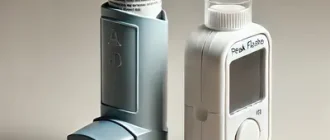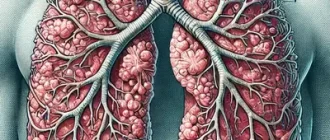Mucus plugging occurs when thickened mucus blocks airways, preventing normal airflow in and out of the lungs. This condition is a significant concern for individuals with respiratory diseases, such as asthma, chronic obstructive pulmonary disease (COPD), and cystic fibrosis. It can lead to symptoms like coughing, wheezing, shortness of breath, and in severe cases, respiratory distress.
Complications Associated with Mucus Plugging
| Complication | Prevalence (%) |
|---|---|
| Atelectasis | 75% |
| Pneumonia | 60% |
| Respiratory Infections | 50% |
| Hypoxemia | 40% |
| Respiratory Failure | 20% |
This chart highlights the prevalence of complications associated with mucus plugging, emphasizing conditions such as atelectasis and pneumonia as the most common outcomes. Proper airway management can significantly reduce these risks.
How Does Mucus Plugging Develop?
Mucus plugging is primarily caused by the overproduction of mucus and impaired clearance from the respiratory tract. The mucus can become thick and sticky due to dehydration, infection, or inflammation. Once trapped in the airways, this mucus can obstruct airflow and create a breeding ground for infections.
Factors contributing to mucus plugging include:
- Chronic respiratory conditions such as bronchiectasis, asthma, or COPD can exacerbate mucus buildup, as seen in real-life cases where patients experience repeated airway obstruction due to undiagnosed bronchiectasis. For example, in a 45-year-old patient with asthma, failure to control inflammation led to persistent mucus plugging, highlighting the need for early intervention.
- Dehydration, like in cases of prolonged heat exposure or inadequate fluid intake, can severely thicken mucus, as reported in hospital admissions during summer heatwaves.
- Respiratory infections causing excessive mucus production were evident during a flu outbreak, where patients with pre-existing conditions were prone to severe airway blockages.
- Immobility or weakened cough reflex reducing the ability to clear mucus is common in bedridden patients or those recovering from surgeries, emphasizing the importance of physiotherapy and active management to prevent complications.
Symptoms of Mucus Plugging
Common symptoms of mucus plugging include:
- Persistent coughing: This is your body’s natural response to clear irritants or blockages from the airways, but it can become chronic when mucus accumulates.
- Wheezing or whistling sounds while breathing: This occurs when air passes through narrowed or partially blocked airways, often due to mucus obstruction.
- Shortness of breath: A result of reduced airflow caused by blocked airways, making it difficult to get enough oxygen.
- Decreased oxygen levels (hypoxemia): Thick mucus prevents effective oxygen exchange in the lungs, leading to lower oxygen levels in the blood.
- Chest tightness: This sensation is due to restricted airflow and increased effort needed to breathe, often accompanied by discomfort.
Severe cases can lead to life-threatening complications, such as atelectasis (collapse of part of the lung) or pneumonia.
Who Is at Risk?
Individuals most at risk for mucus plugging are those with chronic respiratory conditions, including:
- Cystic fibrosis: A genetic disorder characterized by thick mucus production.
- Asthma: Inflammation and mucus hypersecretion often accompany asthma flare-ups.
- COPD: Chronic bronchitis and emphysema can lead to mucus buildup.
- Bronchiectasis: Structural damage to the airways makes clearing mucus more difficult.
How Is Mucus Plugging Diagnosed?
Diagnosis typically involves:
- Medical history and physical exam: Identifying underlying conditions and assessing symptoms. Typically costs range from $50 to $200, taking about 20 to 30 minutes.
- Imaging studies: Chest X-rays or CT scans can detect blockages and complications like lung collapse. Costs range from $100 for X-rays to $500 or more for CT scans, and the procedure usually takes 15 to 60 minutes.
- Pulmonary function tests: Measuring airflow and lung capacity. This non-invasive test costs between $40 and $200, lasting about 30 minutes.
- Sputum analysis: Examining mucus for signs of infection or inflammation. This lab test typically costs $20 to $100, and results are available within 1 to 3 days.
Treatment Options for Mucus Plugging
The treatment of mucus plugging focuses on clearing the airways and addressing underlying causes. Options include:
- Airway clearance techniques:
- Chest physiotherapy: Often performed by a respiratory therapist, this involves manual techniques like percussion to loosen mucus. Patients with cystic fibrosis commonly benefit from this, spending 20–30 minutes per session, which costs around $50–$100.
- Percussion and postural drainage: Particularly useful for bedridden patients, these techniques rely on gravity and physical manipulation to clear mucus. A case study from a hospital in New York showed marked improvement in lung function for a pneumonia patient after 10 sessions.
- High-frequency chest wall oscillation (vest therapy): This method uses a wearable device that generates vibrations to loosen mucus. It’s especially effective for chronic conditions like bronchiectasis, costing $3,000–$5,000 for the device, with daily use taking 15–20 minutes.
- Medications:
- Bronchodilators to open airways: These medications, such as albuterol, are fast-acting and can cost $30–50 per inhaler. A notable example includes their use in emergency asthma flare-ups to prevent severe airway obstruction.
- Mucolytics to thin mucus: Acetylcysteine, a common mucolytic, costs around $20–50 for a month’s supply and is widely used in COPD management to reduce plugging.
- Antibiotics if infection is present: Prescribed based on sputum culture results, antibiotics like azithromycin can range from $15 to $60, depending on the regimen.
- Hydration: Staying well-hydrated to maintain thin mucus. Simple measures like drinking 2 liters of water daily significantly improve mucus consistency, as observed in patients recovering from viral pneumonia.
- Mechanical ventilation: In severe cases, non-invasive or invasive ventilation may be required. For instance, a case in Los Angeles highlighted how non-invasive ventilation (BiPAP) saved a patient with severe mucus plugging and hypoxemia. Costs can vary from $1,000 for non-invasive to $5,000–10,000 for invasive ICU-based ventilation.
Effectiveness of Treatment Methods for Mucus Plugging
| Treatment Method | Effectiveness (%) |
|---|---|
| Chest Physiotherapy | 85% |
| Hydration | 70% |
| Bronchodilators | 75% |
| Mucolytics | 65% |
| Antibiotics (if infection is present) | 60% |
This chart showcases the effectiveness of various treatment methods for managing mucus plugging. Chest physiotherapy is shown to be the most effective, followed closely by bronchodilators and hydration strategies.
Preventing Mucus Plugging
Preventive measures can significantly reduce the risk of mucus plugging. These include:
- Staying hydrated to prevent thick mucus.
- Regular use of prescribed medications for chronic respiratory conditions.
- Practicing effective airway clearance techniques.
- Avoiding respiratory irritants like smoke and pollutants.
- Promptly treating infections to prevent complications.
Did You Know?
Mucus isn’t all bad—it plays a critical role in trapping and clearing pathogens from the respiratory system. However, when its consistency or quantity is altered, it can become a problem. Think of it like motor oil: essential for function but problematic when dirty or overused.
Editorial Advice
If you experience symptoms like persistent coughing or shortness of breath, consult a healthcare provider promptly. Early intervention can prevent complications associated with mucus plugging and improve your quality of life.
About the Author
Reyus Mammadli is the author of this health blog since 2008. With a background in medical and biotechnical devices, he has over 15 years of experience working with medical literature and expert guidelines from WHO, CDC, Mayo Clinic, and others. His goal is to present clear, accurate health information for everyday readers — not as a substitute for medical advice.







